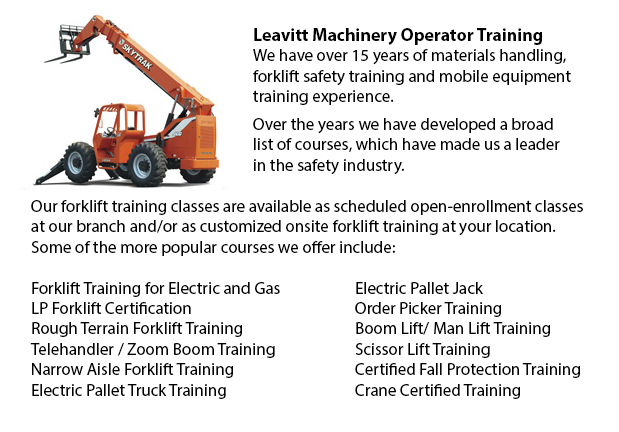
Barrie Telehandler Ticket - A telescopic handler or telehandler is a machine which is commonly used in industrial and agricultural applications. It has the same appearance to a lift truck and even works in a similar manner, even if, the telehandler is more of a crane than a forklift. It has a telescopic boom that can extend forward and upward from the motor vehicle. The boom has the capability to fit one of various attachments including pallet forks, a bucket, a lift table or muck grab.
The most common telehandler accessories are pallet forks. The telehandler is utilized in order to transport goods in situations where the loads cannot be transported by a conventional lift truck. Telehandlers are particularly useful for placing loads on rooftops for example, or for removing palletized cargo from with a trailer. Many of the tasks that a telehandler can carry out would otherwise need a crane and this particular machine could be costly, impractical and not always time efficient.
Since the boom raises or extends while bearing a load, it likewise acts as a lever. Even with the counterweights in the rear, this causes the machine to become ever more unstable; thus, the advantage of the telehandler is really its greatest limitation. As the working radius increases, the lifting capacity lessens. The working radius is defined as the distance between the front of the wheels and the center of the load.
For example, a telehandler with a 5000 lb capacity with the boom retracted could safely lift as little as 400 lb when it is completely extended at a low boom angle. The equivalent machine that has a 5000 lb lift capacity and the boom retracted can support as much as 10,000 lb with the boom raised to 70 degrees. The operator has a load chart to be able to help determine whether a particular lifting task could be completed in an efficient and safe manner. This particular chart considers the boom angle, the weight and height.
-
Barrie Warehouse Forklift Safety Training
Barrie Warehouse Forklift Safety Training - Businesses normally face liability for injuries and damage sustained in workplace accidents. Warehouses can be hazardous places to the individuals who work there. That is the reason why employee safety is a... More -
Barrie Aerial Platform Training
Barrie Aerial Platform Training - Aerial lifts can accommodate many duties involving high and tricky reaching places. Normally used to carry out regular upkeep in buildings with high ceilings, prune tree branches, hoist heavy shelving units or mend p... More -
Barrie Forklift Ticket
Barrie Forklift Ticket - Pallet jacks and lift trucks are both intended for practically the same reason; to transfer goods from one location of your warehouse to another. This is basically where the comparison stops however. With the pallet jack, the... More -
Barrie Aerial Lift Training
Barrie Aerial Lift Training - An aerial work platform is a mechanized access platform. This machinery provides access to otherwise not accessible places for people or equipment. Also referred to as an aerial device or elevating work platform, the mac... More -
Barrie Aerial Boom Lift Training
Barrie Aerial Boom Lift Training - For people who operate or supervise the use of aerial lift platforms, correct aerial boom lift Training is required. The aerial lift platform is utilized for lifting individuals, tools and materials to elevated work... More -
Barrie Manlift Certification
Barrie Manlift Certification - The Elevated Platforms and Manlifts Certification program helps to provide the needed training on the work practices, safe operating procedures, rules and regulations regarding the everyday activities for the operators... More -
Barrie Overhead Crane Certification
Barrie Overhead Crane Certification - The overhead crane training certification course is designed to be effective with all participants regardless of literacy or language limitations. The course has two parts: a classroom training session and a prac... More -
Wheel and Track Loader Training in Barrie
Lift trucks are obtainable in several various units that have varying load capacities. The majority of typical lift trucks utilized in warehouse settings have load capacities of one to five tons. Bigger scale models are used for heavier loads, such a... More

Forklift Certification Barrie
TOLL FREE: 1-888-254-6157
Barrie, Ontario
forkliftcertificationbarrie.com
Email Us
About Us


